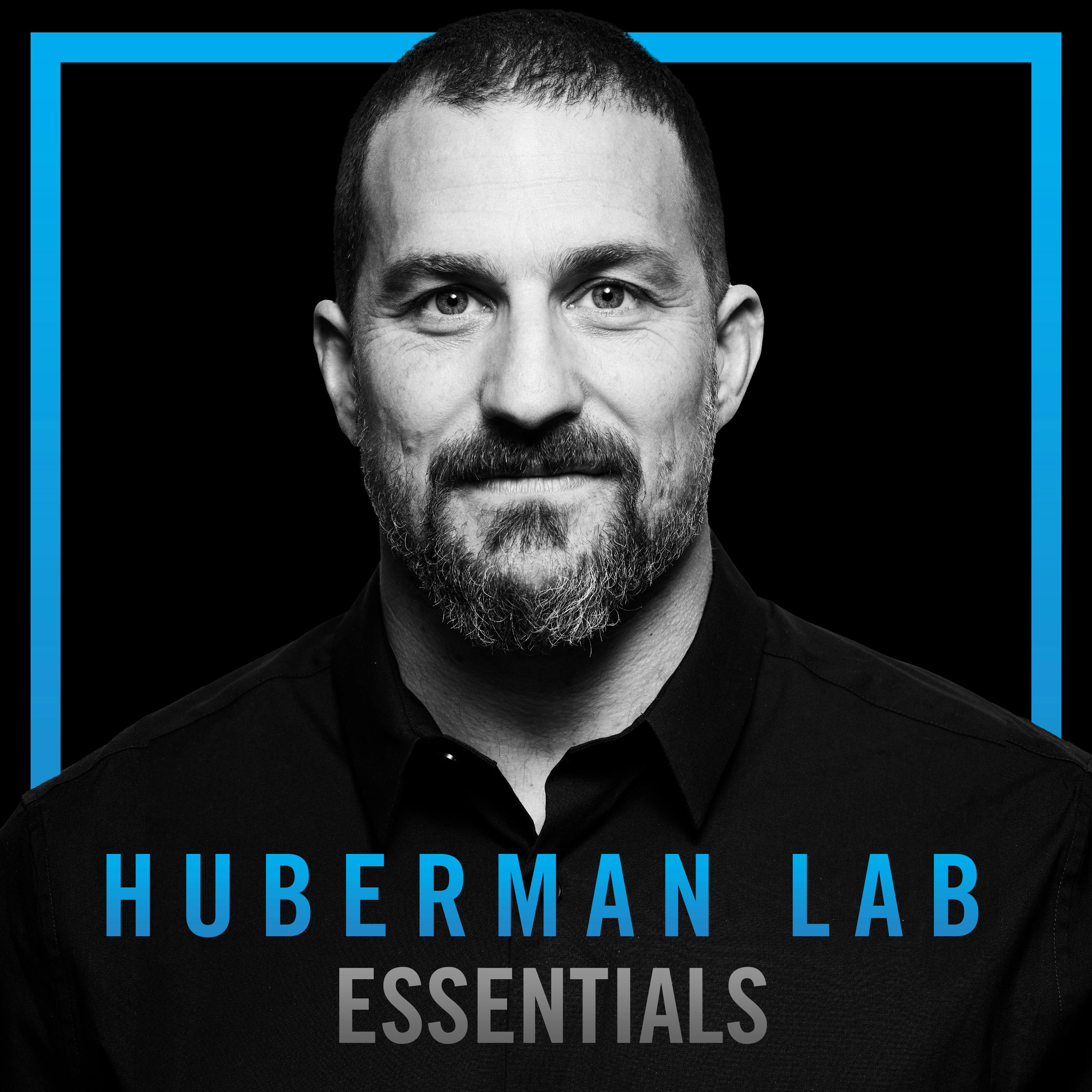
February 6, 2025 • 42min
Essentials: The Science of Emotions & Relationships
Huberman Lab

Key Takeaways
- Emotions are made up of three key components:
- Level of autonomic arousal (alert vs. calm)
- Valence (feeling good vs. bad)
- Balance between interoception (internal focus) and exteroception (external focus)
- Early emotional development is shaped by infant-caregiver bonds and how reliably caregivers meet the infant's needs
- Puberty represents a critical period for emotional development, driven by hormonal changes and increased testing of social bonds
- Healthy emotional bonds involve alternating between:
- Calm, soothing states (driven by serotonin and oxytocin)
- Excited, exploratory states (driven by dopamine)
- Understanding emotions requires recognizing both internal bodily states and external social cues
Introduction
In this Huberman Lab Essentials episode, Dr. Andrew Huberman explores the biology and psychology of emotions, focusing on how they develop from infancy through adolescence and how they shape our relationships and social bonds. He examines the key neural circuits, hormones, and developmental periods that influence emotional processing, while providing practical frameworks for understanding and working with emotions.
Topics Discussed
The Three Components of Emotion (8:04)
Huberman introduces three fundamental axes that make up emotional experiences:
- Autonomic arousal - The continuum from highly alert to very calm
- Valence - Whether something feels good or bad
- Attention focus - The balance between internal awareness (interoception) and external awareness (exteroception)
He emphasizes that understanding these components provides a framework for analyzing and working with emotions beyond simple labels like "happy" or "sad".
Early Emotional Development (4:39)
The episode explores how early infant-caregiver relationships shape emotional development:
- Infants begin life primarily focused inward (interoceptive)
- Through caregiver interactions, babies learn to predict how external actions will meet their internal needs
- Four key elements of emotional bonding develop:
- Gaze (eye contact)
- Vocalizations
- Affect (emotional expression)
- Touch
The Strange Situation Task (14:02)
Huberman discusses the classic attachment research by Bowlby and Ainsworth:
- Four patterns of infant response to caregiver return:
- Type A (Secure) - Happy to reunite
- Type B (Avoidant) - Less likely to seek comfort
- Type C (Ambivalent) - Shows annoyance
- Type D (Disorganized) - Avoids all interaction
- These patterns help predict later emotional regulation abilities
Puberty and Emotional Development (24:11)
The episode examines how puberty represents a critical period for emotional development:
- Biological triggers:
- Kisspeptin initiates hormonal cascades
- Leads to production of s*x hormones
- Brain changes occur before physical changes
- Increased desire for independence and peer relationships
- Period of testing social interactions and emotional responses
Creating Healthy Emotional Bonds (33:13)
Huberman describes the neurochemical basis of healthy emotional bonds:
- Alternating between:
- Calm, soothing states (serotonin/oxytocin)
- Excited, exploratory states (dopamine)
- Oxytocin's role:
- Increases awareness of others' emotional states
- Promotes synchrony between individuals
- Released during positive social interactions
The Vagus Nerve and Emotional States (37:07)
The episode challenges common misconceptions about vagal stimulation:
- Vagus nerve stimulation can increase alertness, not just calmness
- Clinical applications show promise for treating depression
- Demonstrates the complex relationship between bodily states and emotions
Conclusion
Understanding emotions requires recognizing their complex components - arousal level, valence, and attention focus - rather than thinking of them as simple labels. This framework can help develop richer emotional experiences and better emotional regulation. The development of healthy emotional patterns begins in infancy and continues through puberty, shaped by both biological factors and social experiences.
Key tools for working with emotions include:
- Practicing awareness of internal vs. external focus
- Understanding the role of arousal states in emotional experience
- Recognizing the importance of social bonds in emotional regulation
- Appreciating the biological basis of emotional development and change





